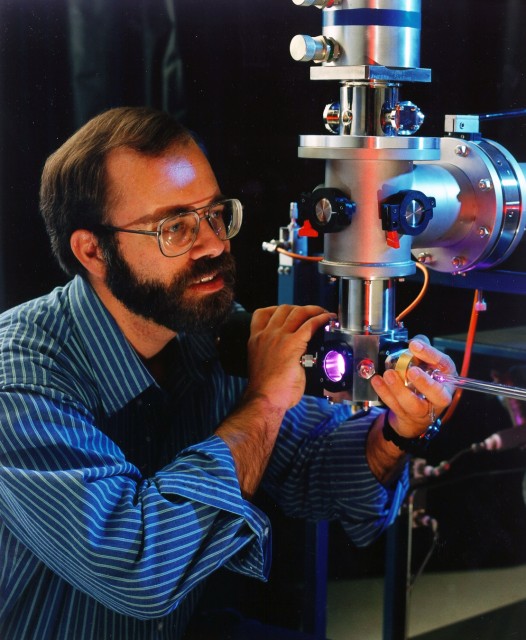Director's Colloquium
When the Stardust spacecraft flew within a few hundred kilometers of the nucleus of Comet Wild 2 it collected samples of dust from the comet's thin atmosphere, called the coma. These were returned to Earth on January 15, 2006 and represent the first solid samples ever collected outside the Earth-Moon system and returned to Earth.
In a Director's Colloquium Tuesday afternoon, Stardust co-investigator Scott Sandford will discuss the results of the sample analysis. The unclassified colloquium starts at 1:10 p.m. in the Physics Building Auditorium and is open to all employees.
Notes Sandford, a preliminary examination of the samples has demonstrated that the dust consists of a very heterogeneous mix of mineral and organic components that show the comet had a complex formation history. He will provide a brief overview of the Stardust mission and discuss what the team has learned about the nature of comets and the origin of the solar system based on the mission's results. He will particularly concentrate on the organics found in the samples since cometary organics may have played a role in the origin of life on Earth.
Sandford is co-leader of NASA Ames' Astrochemistry Laboratory. He is a member of Ames' Astrophysics Branch and has extensive experience in the fields of meteoritics. Sandford is an associate editor of the journal Meteoritics and Planetary Science, and has helped find many meteorites in Antarctica, some of them quite famous.
Sandford also does extensive work in the areas of laboratory astrophysics, astrochemistry, and astrobiology, and participates in infrared astronomy studies using ground-based, airborne, and spaceborne observatories. He has used the combined techniques of infrared astronomy and laboratory astrophysics to identify a number of new molecular species in space, many of interest to astrobiology. Current laboratory interests include the study of the physical, chemical, and spectroscopic properties of polycyclic aromatic hydrocarbons, and astrophysical ice analogs relevant to interstellar, cometary, and planetary environments.
Sandford has served as a co-investigator on the Stardust Discovery Mission to Comet 81P/Wild 2 and the joint Japanese-US Hayabusa Mission to Asteroid Itokawa. The Hayabusa Mission rendezvoused with asteroid Itokawa in September 2005, attempted to collect a surface sample, and is now on its way to return to Earth in 2010.
The talk also can be watched on LABNET Channel 9 and on desktop computers using IPTV or Real Media.
More information about the Director's Colloquium series is online.

